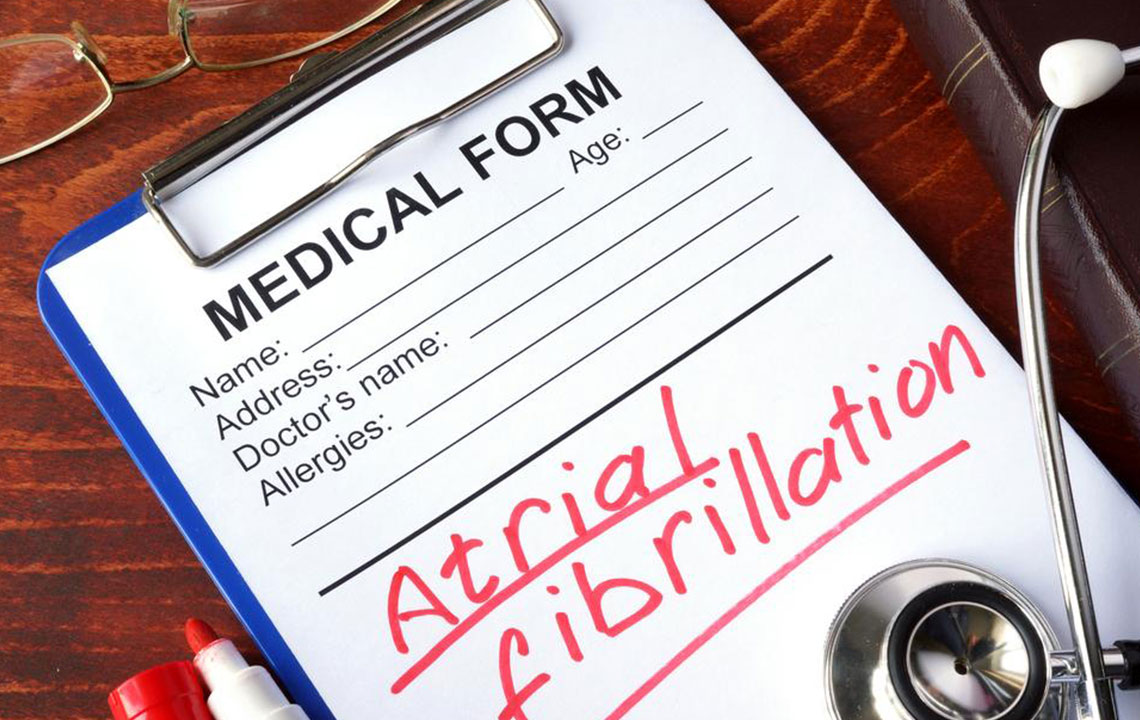Comprehensive Guide to Detecting and Managing Atrial Fibrillation (AFib)
Atrial fibrillation (AFib) is a common heart rhythm disorder that increases stroke and blood clot risks. This comprehensive guide details symptoms, risk factors, diagnostic methods, and treatment options including medications and procedures. Early detection and lifestyle changes are vital for effective management. Learn how to identify signs early and work with your healthcare provider for optimal heart health and improved quality of life.

Comprehensive Guide to Detecting and Managing Atrial Fibrillation (AFib)
Atrial fibrillation, commonly known as AFib, is a prevalent cardiac arrhythmia characterized by irregular and often rapid heart rhythms. Affecting millions globally, this condition can pose significant health risks if not diagnosed and managed effectively. AFib disrupts the normal electrical signals in the heart, particularly affecting the atria—the heart's upper chambers—leading to inefficient blood flow and increasing the likelihood of complications such as stroke and blood clot formation. Recognizing the early warning signs and understanding the underlying causes are critical steps in preventing adverse outcomes and maintaining heart health.
Understanding the mechanism of atrial fibrillation involves delving into how electrical signals in the heart become disorganized. Normally, the heart's sinoatrial (SA) node sends regular electrical impulses that coordinate heartbeats. In AFib, these impulses become chaotic, resulting in the irregular and often rapid heartbeats typical of the condition. This irregular rhythm can be sporadic or persistent, influencing the severity of symptoms and treatment strategies.
Common Symptoms of Atrial Fibrillation
Irregular Heartbeat: Many individuals experience a sensation of fluttering or pounding in the chest, often described as irregular, rapid, or skipping beats.
Fatigue and Weakness: Due to inefficient blood pumping, fatigue and general weakness are frequent complaints among AFib patients.
Shortness of Breath: Increased heart rate and irregular rhythm can cause breathing difficulties, especially during physical activity or exertion.
Dizziness and Fainting: Reduced blood flow to the brain may lead to dizziness, lightheadedness, or fainting episodes.
Chest Discomfort: Some individuals experience chest pain or discomfort, which should prompt immediate medical evaluation.
Confusion or Cognitive Changes: Particularly in older adults, AFib may cause confusion, impaired concentration, or cognitive disturbances.
Exercise Intolerance: Reduced stamina or inability to perform physical activities without symptoms is common among affected individuals.
Key Risk Factors for Developing Atrial Fibrillation
Age: The risk of AFib increases significantly with age, especially after 60 years old.
Cardiovascular Diseases: Conditions such as coronary artery disease, heart failure, and valvular heart disorders elevate risk.
High Blood Pressure: Hypertension causes strain on the heart, contributing to the development of AFib.
Obesity and Sedentary Lifestyle: Excess weight and lack of physical activity are modifiable risk factors.
Diabetes: Elevated blood sugar levels can damage heart tissue and disrupt electrical signals.
Thyroid Disorders: Hyperthyroidism, in particular, is linked to AFib onset.
Alcohol and Drug Use: Excessive alcohol intake and certain stimulants can precipitate episodes of AFib.
Diagnosis and Detection
Detecting atrial fibrillation involves a combination of clinical assessment and diagnostic tests. The primary tool is the electrocardiogram (ECG), which records the electrical activity of the heart. An ECG can confirm irregular rhythms characteristic of AFib. In cases where the arrhythmia is intermittent, Holter monitors or event recorders may be used for extended monitoring over days or weeks.
Management and Treatment Options
While atrial fibrillation cannot always be cured permanently, various strategies exist to control symptoms, prevent complications, and improve quality of life. Treatment plans are tailored based on the severity of symptoms, underlying causes, and patient-specific factors.
Medications
Anticoagulants: Blood thinners such as warfarin or novel oral anticoagulants (NOACs) reduce the risk of stroke by preventing clot formation.
Rate Control Drugs: Beta-blockers and calcium channel blockers help slow the heart rate, easing symptoms.
Rhythm Control Medications: Antiarrhythmic drugs can restore normal rhythm, especially in symptomatic or persistent AFib cases.
Procedures and Interventions
Electrical Cardioversion: A procedure that uses electric shocks to restore normal heart rhythm, typically performed in a clinical setting.
Catheter Ablation: A minimally invasive procedure to destroy faulty electrical pathways causing AFib.
Surgical Options: In severe or refractory cases, surgical interventions like maze procedures are considered.
Lifestyle Modifications for Managing AFib
Healthy Diet: Consuming a balanced diet rich in fruits, vegetables, whole grains, and lean proteins supports overall heart health.
Regular Exercise: Moderate physical activity can improve cardiovascular function but should be tailored to individual capacity.
Avoiding Triggers: Limiting caffeine, alcohol, and stimulants can help prevent episodes.
Stress Reduction: Techniques such as meditation, yoga, and relaxation exercises reduce stress, which can precipitate arrhythmias.
Weight Management: Achieving and maintaining a healthy weight reduces strain on the heart.
Prevention and Outlook
Early detection and consistent management are crucial in reducing the risk of severe complications like stroke, heart failure, and long-term deterioration. Regular check-ups, monitoring symptoms, and adhering to prescribed treatments significantly improve prognosis. Patients are encouraged to work closely with their healthcare providers to establish a personalized care plan and attend routine evaluations.
Conclusion
Atrial fibrillation is a complex heart rhythm disorder that demands awareness, timely diagnosis, and comprehensive management. Recognizing symptoms early, understanding risk factors, and adopting lifestyle modifications can significantly improve outcomes. Advances in medical technology, including minimally invasive procedures, have enhanced treatment options, making it possible to effectively control AFib and prevent its serious complications.





